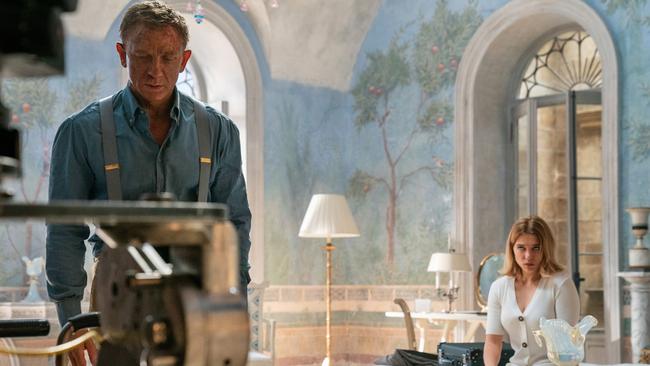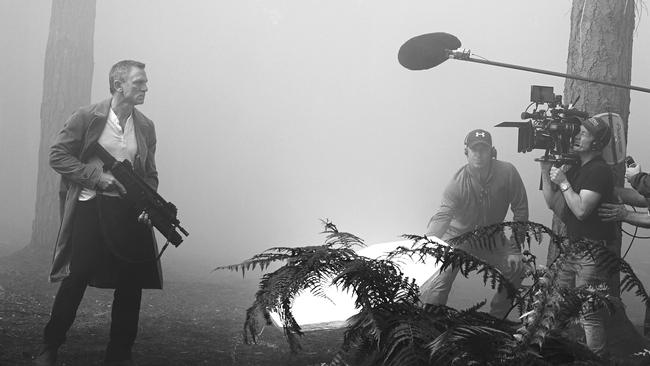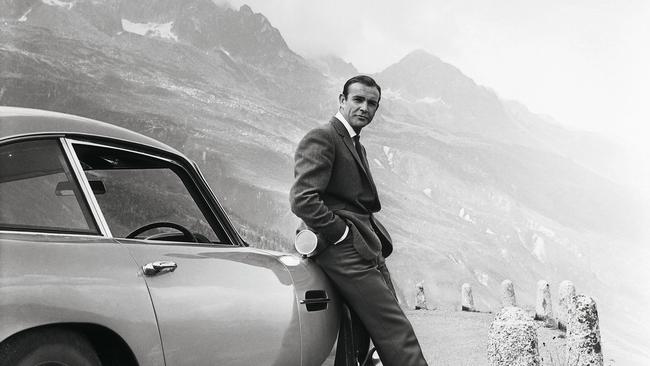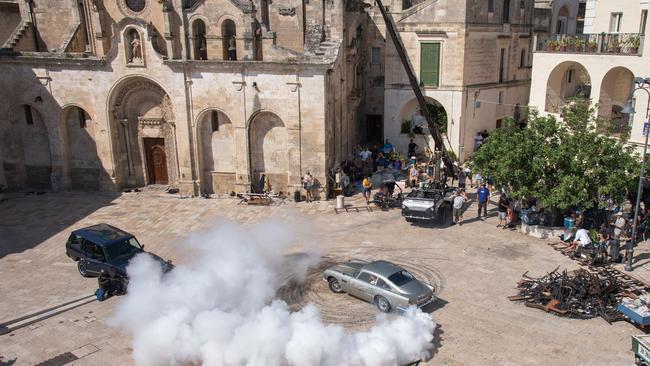UnbreakableBond: the secret to 007’s success
As No Time To Die comes to our screens, 007 shows no signs of slowing down. The woman behind its astonishing box office reign reveals the difficult balancing act of being Bond.

Michael G. Wilson and Barbara Broccoli are the gatekeepers to the long-running James Bond movie franchise, with the final say on everything from who plays the iconic British Secret Service agent to the selection of cast and crew, the cinematic storylines, and control over merchandising.
007 is a family business. Wilson’s stepfather and Broccoli’s father, Albert R. “Cubby” Broccoli, handed over the running of EON Productions to them in 1995.
EON – an acronym for “everything or nothing” – has made all 25 official Bond films. Their holding company, Danjaq, co-owns the movie rights with MGM Studios.
“Cubby was a great filmmaker before Bond and he brought all of those skills and all that experience into making the first Bond film, Dr No, and many of those team members stayed on for six or seven additional films,” Wilson, 79, tells Inquirer. “That sense of a family, a band of brothers and sisters that make the films, is still with us today.”
Barbara was a baby on the set of Dr No (1962), and Wilson joined EON in a legal and administrative role in 1972. They have worked on every Bond film since The Spy Who Loved Me (1977), and together produced the past nine Bond films. Wilson also produced several 007 films with his stepfather, co-wrote five screenplays and has been an extra in many films, beginning with Goldfinger (1964).
No Time To Die sees Daniel Craig return as Bond for the fifth and final time. Craig has reinvented the role created by novelist Ian Fleming. Over the previous four films, Craig’s Bond has been confident and assured, flirtatious and stylish, a cold and calculating killer, but also vulnerable and sensitive, emotionally deeper than his predecessors.
The casting of Craig as the British super spy for Casino Royale (2006) was met with near-universal condemnation.
He was dubbed “James Bland” by the British tabloids. Fans demanded that he be replaced. Broccoli, who identified Craig and pushed for him to take the role, says he exceeded even her high expectations.

“From the moment he started the first day of filming on Casino Royale to the last day we were filming No Time To Die, I have been astounded by his ability, professionalism, humanity and courtesy,” Broccoli, 61, tells Inquirer.
“He is an extraordinary person and a magnificent actor, as evidenced by the overwhelming response from audiences around the world who adore him.”
The secret to the success of the Bond films is being able to continually refashion the central character to keep it modern while at the same time being faithful to Fleming’s invention and the film franchise’s legacy. It is a difficult balancing act.
“A lot of great directors have tried their hand at Bond, making it their own by adding something new and fresh,” Wilson says. “Keeping it contemporary has kept the Bond franchise alive in the public interest and in the public mind.”
Bond fans look for the signature lines – “My name is Bond, James Bond” – and iconography that stamps the films: a martini shaken, not stirred; the Aston Martin DB5; the Walther PPK pistol; the Savile Row suit; and the gadgets to get Bond out of trouble.
There are also the jaw-dropping locations and death-defying stunts. Plus, the recurring characters from MI6 – M, Q and Moneypenny – and Bond’s CIA friend, Felix Leiter.
The broader Bond world is also essential: the villain bent on domination or destruction living in a fantasy lair; the stylish and smart “Bond Girls” with outrageously over-the-top such as Honey Ryder, Pussy Galore, Holly Goodhead, Octopussy and Xenia Onatopp; John Barry’s unmistakeable theme music and opening gun-barrel sequence; and a title song from the likes of Shirley Bassey, Adele or Billie Eilish set against silhouetted titles.
Fleming introduced Bond in his first novel, Casino Royale, in 1953. The films have remained largely faithful to his character and stories, many elements of which have found their way into every big-screen portrayal.
“When we have new directors coming in, and new actors, they often go back and read one of the novels to reset themselves in the world of James Bond,” says Wilson. “The character is so universal that it is easy to keep it contemporary by going back to Fleming.”
The epic story of the films is told in a new edition of The James Bond Archives, edited by Paul Duncan, which combines an extraordinary array of photographs, archival documents and interviews with cast and crew chronicling every movie. It is essential reading for any Bond fan.
Canadian Harry Saltzman purchased the rights to Fleming’s books but could not finance a film adaptation, so he partnered with the American, Broccoli, and they formed EON and made Dr No with United Artists.

Together they made cinematic magic and launched a cultural phenomenon. But after nine Bond films, there were tensions and Saltzman ran into financial difficulties. He sold his half share in the rights to Bond to United Artists in 1975, and Broccoli became sole producer. He died in 1996. “Albert R. Broccoli’s Eon Productions Presents …” still leads the title sequence for every Bond film.
Six actors have played 007, leaving aside David Niven’s spoof, Casino Royale (1967), Barry Nelson who played “Jimmy Bond” on television (1954) and Bob Holness who voiced Bond on radio (1958).
The success of the series owes much to Sean Connery, who portrayed Bond in six films plus the terrible Never Say Never Again (1983), not made by EON. For many, Connery is Bond. He was stylish and tough, and is emblematic of the role, but his rough handing of women has not aged well.
“He was the reason why this series took off,” Broccoli says of Connery. “If there was another actor in the role, we may never have seen another James Bond film. It is one of the great screen introductions in cinema history. They picked the right guy – there’s no question about that.”
Australian model George Lazenby succeeded Connery after dazzling Broccoli and Saltzman during an audition. His film, On Her Majesty’s Secret Service (1969), has been favourably reassessed. He inexplicably turned down £1m at the time for a second 007 film and a seven-film contract with United Artists.
“George did a good job,” says Wilson. “He walked away from it. I think he is being re-evaluated and some fans always thought he was one of the best Bonds, and On Her Majesty’s Secret Service was one of the best Bond films.”
Roger Moore, who was unavailable when Connery initially left the role, brought a lighter touch with deadpan humour and a cooler method of seduction in his seven films, beginning with Live and Let Die (1973). Moore showed the series could be successful with different interpretations of 007.
“It very much reflects that period in history,” Broccoli says of Moore. “It was a slightly more frivolous time. The films were much more humorous and he had such panache. He was a fabulous actor and a wonderful person.”
Timothy Dalton, who had previously been approached about the role, gave the movies a more realistic and darker edge which was often closer to the novels but lacked the essential humour. The Living Daylights (1987) and Licence to Kill (1989) were no longer Bond films to take the family to.
“Timothy wanted to distinguish himself from Roger,” says Wilson. “Being a theatre actor, he was used to drilling down into the character and figuring out what makes them tick. He went back to the Fleming books, read them extensively, and decided his interpretation that way. He was a very good Bond.”
Pierce Brosnan was considered for the role after Moore but could not be released from his Remington Steele TV contract. GoldenEye (1995) took Bond beyond the Cold War and is brilliant. But his fourth film, Die Another Day (2002), was so bad – with invisible car, space laser and tsunami surfing – many questioned whether Bond could survive. Brosnan is the only actor to leave the role involuntarily – he was fired.

“The Berlin Wall had come down and the press were saying, ‘Oh what’s the point of James Bond?’ ” Broccoli recalls. “We were under a lot of pressure at that time because people were very sceptical whether Bond could be reimagined for the 90s, and Pierce was hugely responsible for the success of the reboot with GoldenEye.”
Casino Royale is somewhat of an origin story, set when Bond first becomes 007, and retooled Fleming’s first novel for a post-9/11 world. Craig is astonishing as Bond and this film is arguably the best of the franchise. The story unspooled over the next three films and concludes in No Time To Die, as Craig continues to take Bond into uncharted territory.
We find Bond in retirement living in Jamaica when his friend, Leiter (Jeffrey Wright), lures him back into service and they are soon pursuing a shadowy villain, Safin (Rami Malek), as the former 007’s personal life becomes entangled with this final mission.
With Craig’s departure, it is time once again to transform the role and the series. Speculation is rife as to who will be given the next licence to kill, but Broccoli insists she has not yet turned her mind to it. “I’m in denial,” she says. “I really don’t want to think about life beyond Daniel. Right now, I just want to celebrate his reign, and this film, which is the epic conclusion of the five films in his tenure. I think this is a fantastic Bond film.”
But – as ever – James Bond will return.
No Time To Die opens in cinemas on November 11. The James Bond Archives, edited by Paul Duncan, is published by Taschen.



To join the conversation, please log in. Don't have an account? Register
Join the conversation, you are commenting as Logout